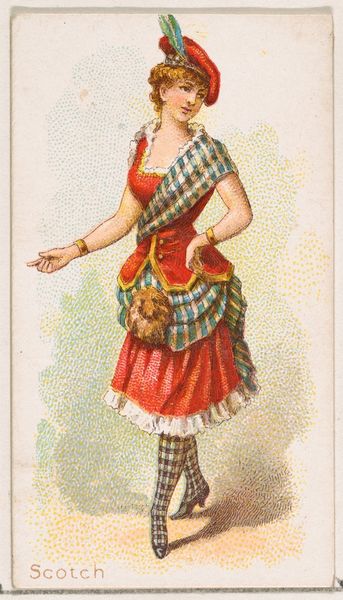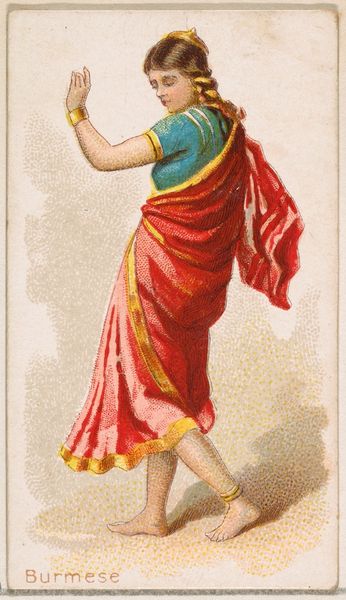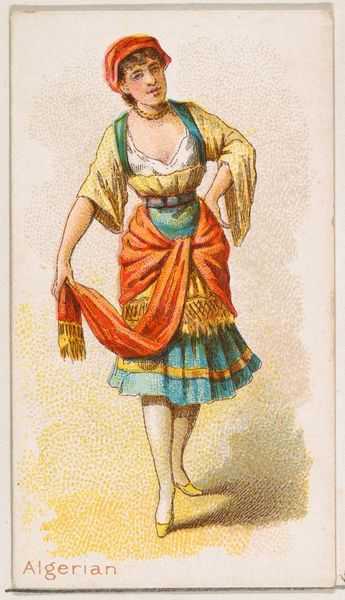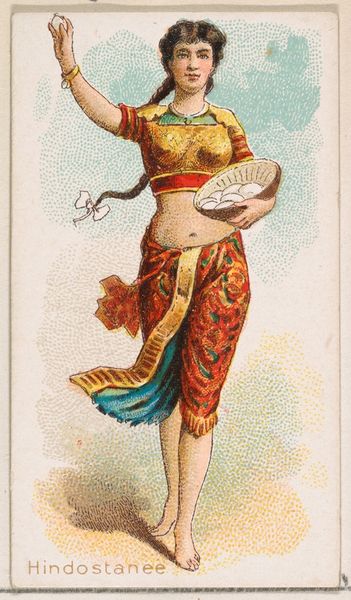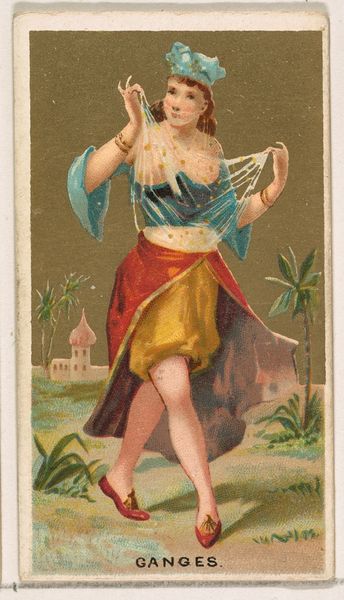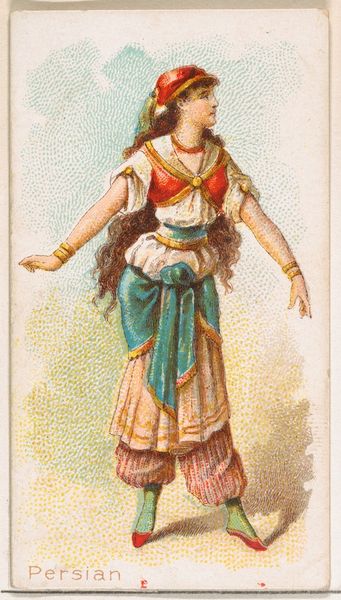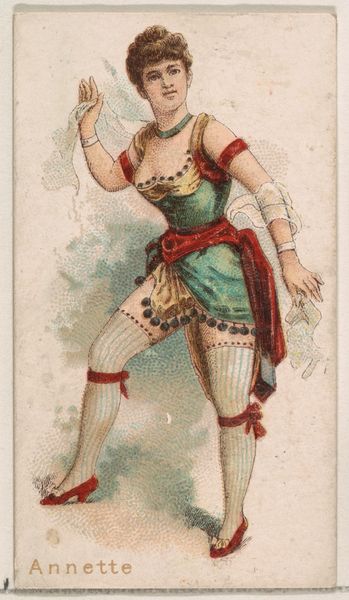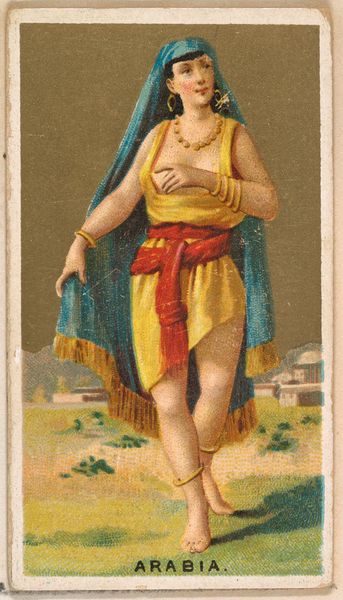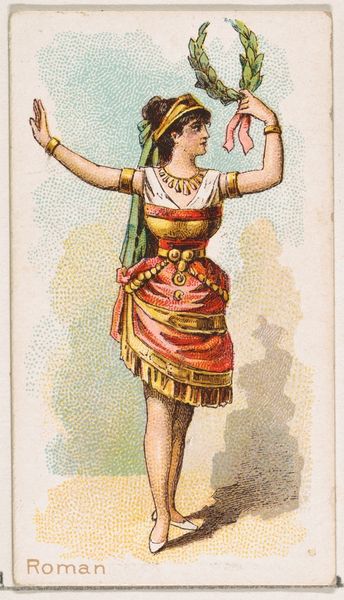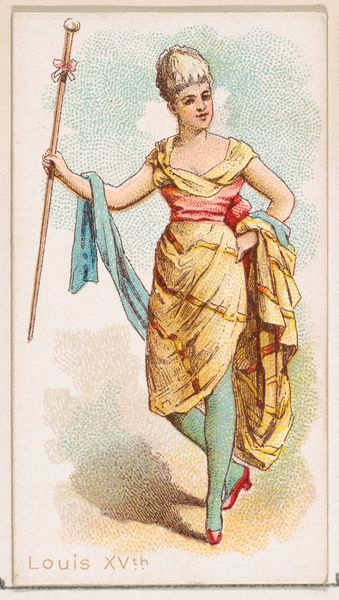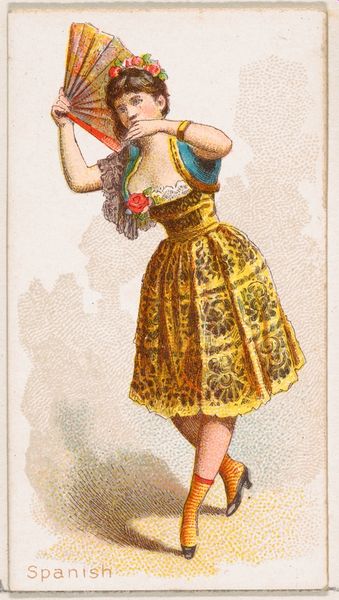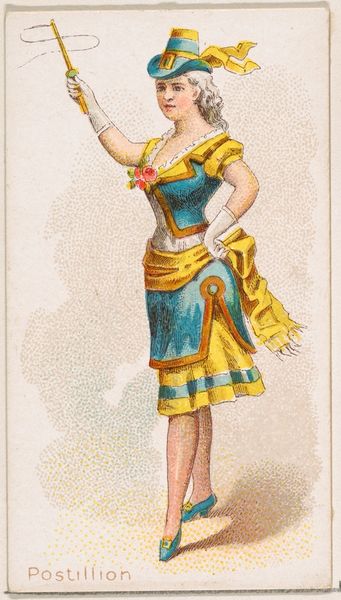
Moorish Dancer, from the Dancing Women series (N186) issued by Wm. S. Kimball & Co. 1889
0:00
0:00
drawing, print
#
drawing
#
toned paper
#
green and blue tone
# print
#
caricature
#
coloured pencil
#
coffee painting
#
men
#
animal drawing portrait
#
watercolour illustration
#
green and neutral
#
watercolor
#
warm toned green
Dimensions: Sheet: 2 11/16 × 1 7/16 in. (6.9 × 3.7 cm)
Copyright: Public Domain
This small chromolithograph, produced by the Wm. S. Kimball & Co., is from the "Dancing Women" series of cigarette cards. These cards, popular in the late 19th century in America, offer insight into the cultural fascinations of the time. The "Moorish Dancer" embodies Orientalist fantasies, presenting a European ideal of exoticism. The dancer’s costume, though meant to evoke the "Orient," is a pastiche of Western imagination rather than an accurate representation of Moorish attire. Examining such images, we can explore how Western culture constructed ideas about the "Orient" and how these notions were circulated through commercial products. Understanding this requires researching period advertising, theatre, and literature to grasp the visual codes and cultural references at play. The meaning of such an image is contingent on its historical and institutional context; tracing its origins allows us to reflect on the politics of imagery and the social conditions that shape artistic production.
Comments
No comments
Be the first to comment and join the conversation on the ultimate creative platform.

